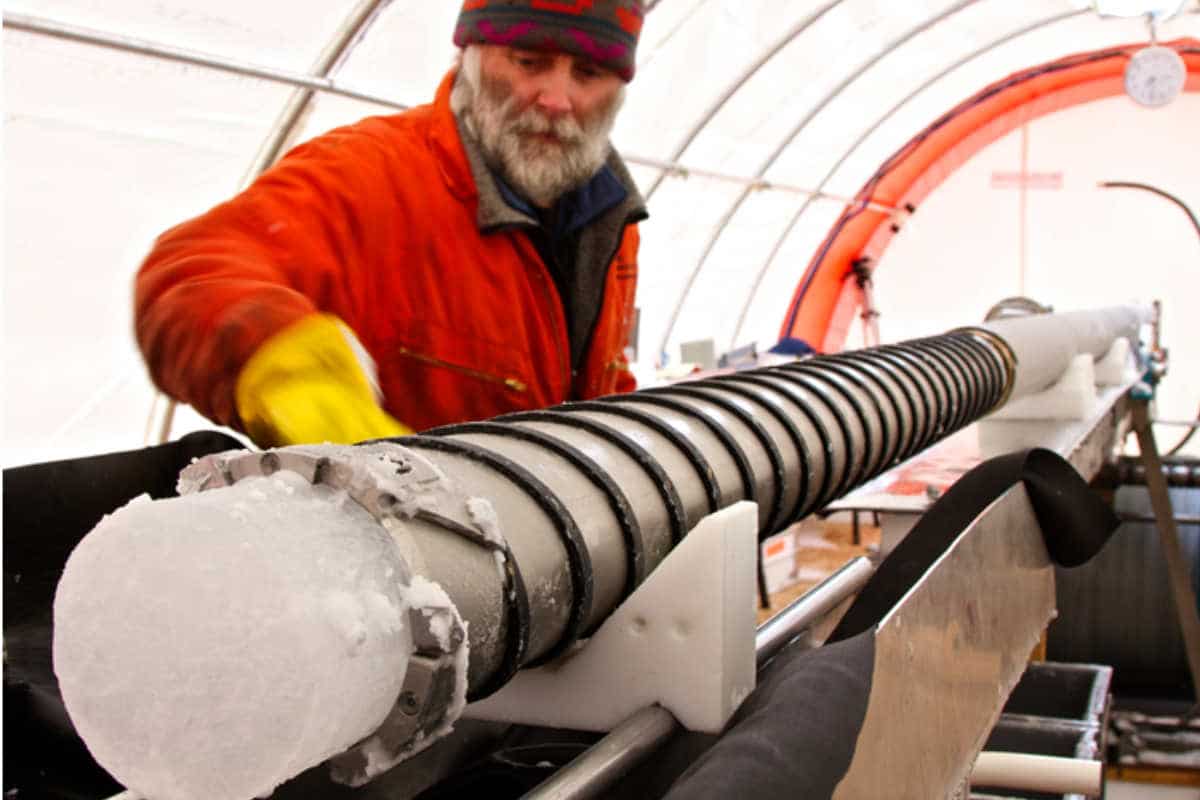
People were already doing that around the year 1300, according to a new – and quite surprising – study.
It was assumed that if you looked a few hundred years back in time, you would find a pre-industrial, untouched world. But a new study dispels that assumption. “It is now clear that humans have been influencing the area over the Southern Ocean and Antarctica for at least 700 years,” said study researcher Joe McConnell.
soot
Several years ago, while analyzing ice core samples taken on James Ross Island in Antarctica, scientists noticed something unusual. They found an unexpected increase in black carbon (soot), starting around the year 1300. Soot is a light-absorbing particle that is created by the combustion of biomass (for example, forest fires) and is also released by the combustion of fossil fuels. How all that soot got trapped in hundreds of years old Antarctic ice, however, has been a mystery. And so, in a new study, researchers decided to look for a conclusive explanation.
Quest
To unravel the origins of the unexpected soot build-up so early in history, the research team analyzed six ice cores from James Ross Island. Analysis of the ice cores again showed a remarkable increase in soot from the year 1300. Levels then tripled in the following 700 years and peaked in the 16th and 17th centuries. However, levels in mainland Antarctica remained relatively stable over the same period. This allowed the researchers to draw an interesting conclusion. “Our models show that Patagonia, Tasmania and New Zealand were the likely sources of the markedly increased soot emissions,” said study researcher Andreas Stohl.
New Zealand
The researchers took a closer look at the three regions and were able to rule out two as possible sources of the soot. This left only one option: New Zealand. In the end, the researchers managed to explain the puzzling increase in soot. Around 1300 the Māori people came ashore in New Zealand, which was accompanied by the burning of forested areas. And this apparently happened on such a large scale that it greatly affected the atmosphere over much of the Southern Hemisphere.

Deposits of soot over the past 200 years measured using ice cores taken from mainland Antarctica and James Ross Island at the northern tip of the Antarctic Peninsula. The levels can be seen increasing from the late 13th century, which is linked to the arrival of the Māori in New Zealand some 7000 kilometers away. Image: DRI
It’s a surprising conclusion, given New Zealand’s relatively small land area and the distance (about 7,200 kilometers) the smoke must have traveled to reach James Ross Island. “Compared to the wildfires in the Amazon, South Africa and Australia, you wouldn’t expect the Māori fires in New Zealand to have a major impact,” said study researcher Nathan Chellman. “But it did in the Southern Ocean and the Antarctic Peninsula.”
Earth atmosphere
It means that apparently we are not the first to radically change the Earth’s atmosphere. It happened some 700 years ago. “The discovery that humans were already causing such a significant change in atmospheric soot levels at that point in history is quite surprising,” McConnell says. While it’s often believed that human influences were negligible during pre-industrial times, this new study provides new evidence that emissions from human-related combustion may have affected Earth’s atmosphere and climate on a large scale much earlier than thought.
Important
These research results are important for a number of reasons. First, the findings have important implications for our understanding of Earth’s atmosphere and climate. Modern climate models use information about the historical climate to produce accurate projections of the future. And the emissions and concentrations of black carbon are essential in this regard. Second, the combustion of biomass is accompanied by the growth of phytoplankton in much of the ocean. And so the findings mean that the fires started by the Māori likely led to centuries of increased growth and flowering of phytoplankton in large parts of the southern hemisphere. Third, the results narrow down when the Māori arrived in New Zealand; one of the last places on Earth to be colonized by humans. It was believed that the Māori set foot in the 13th or 14th century. But thanks to the ice cores, the researchers now know that large-scale combustion of biomass in New Zealand began around 1297, with a 30-year uncertainty.
All in all, the study yields interesting results. “Ice cores are again proving very valuable in our understanding of past human impacts on the environment,” concluded McConnell. And that leads to a whole new insight: “Even the most remote parts of the Earth were not necessarily pristine in pre-industrial times,” he underlines.
Source material:
“Early human activities impacted Earth’s atmosphere more than previously known– Desert Research Institute (via EurekAlert)
Image at the top of this article: Jack Triest